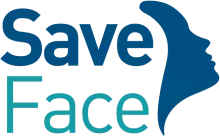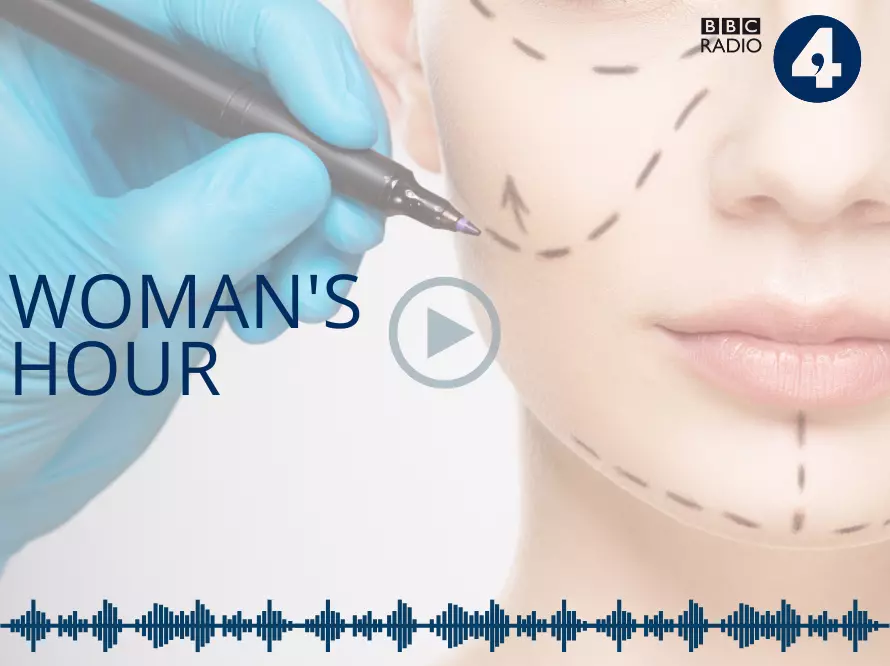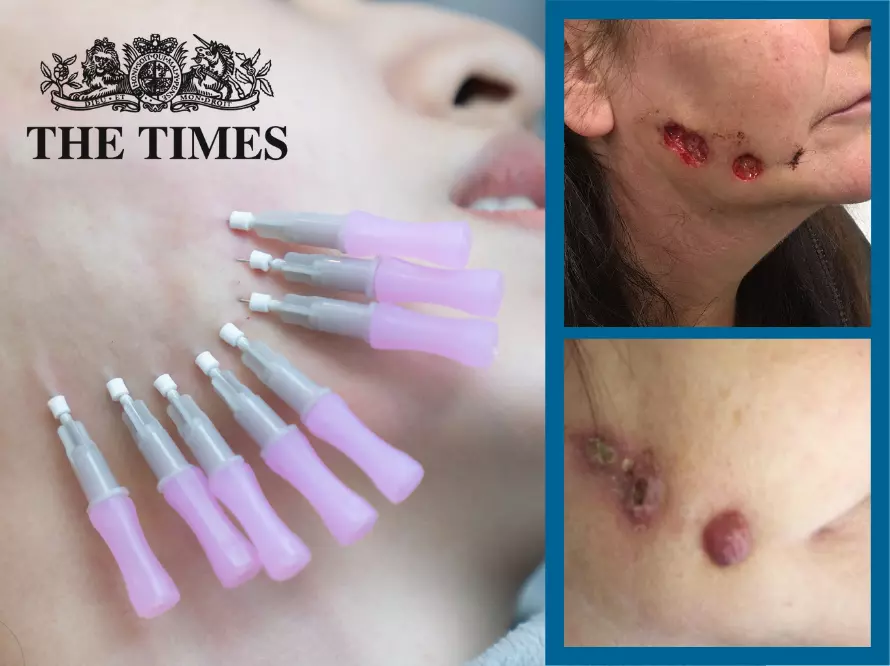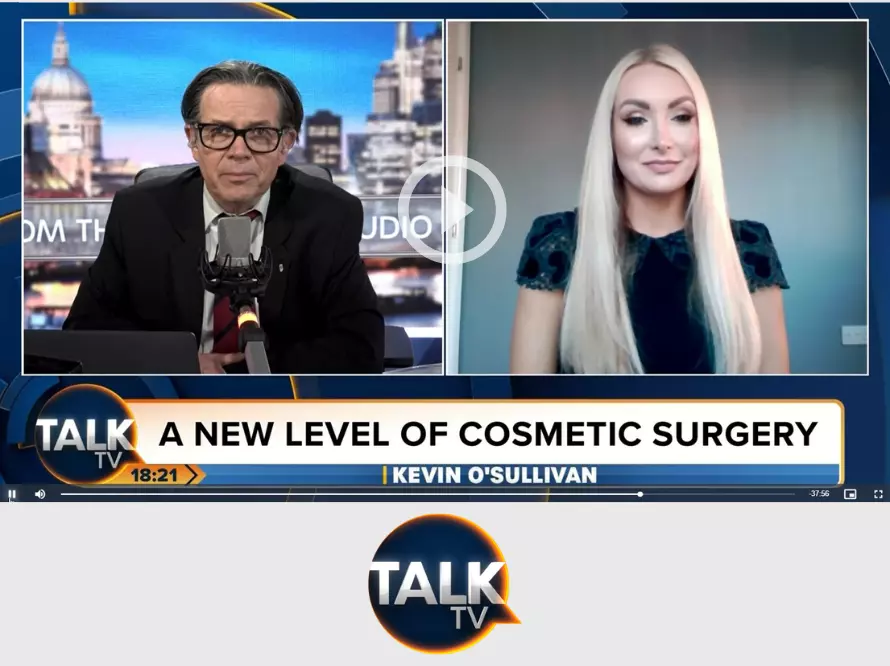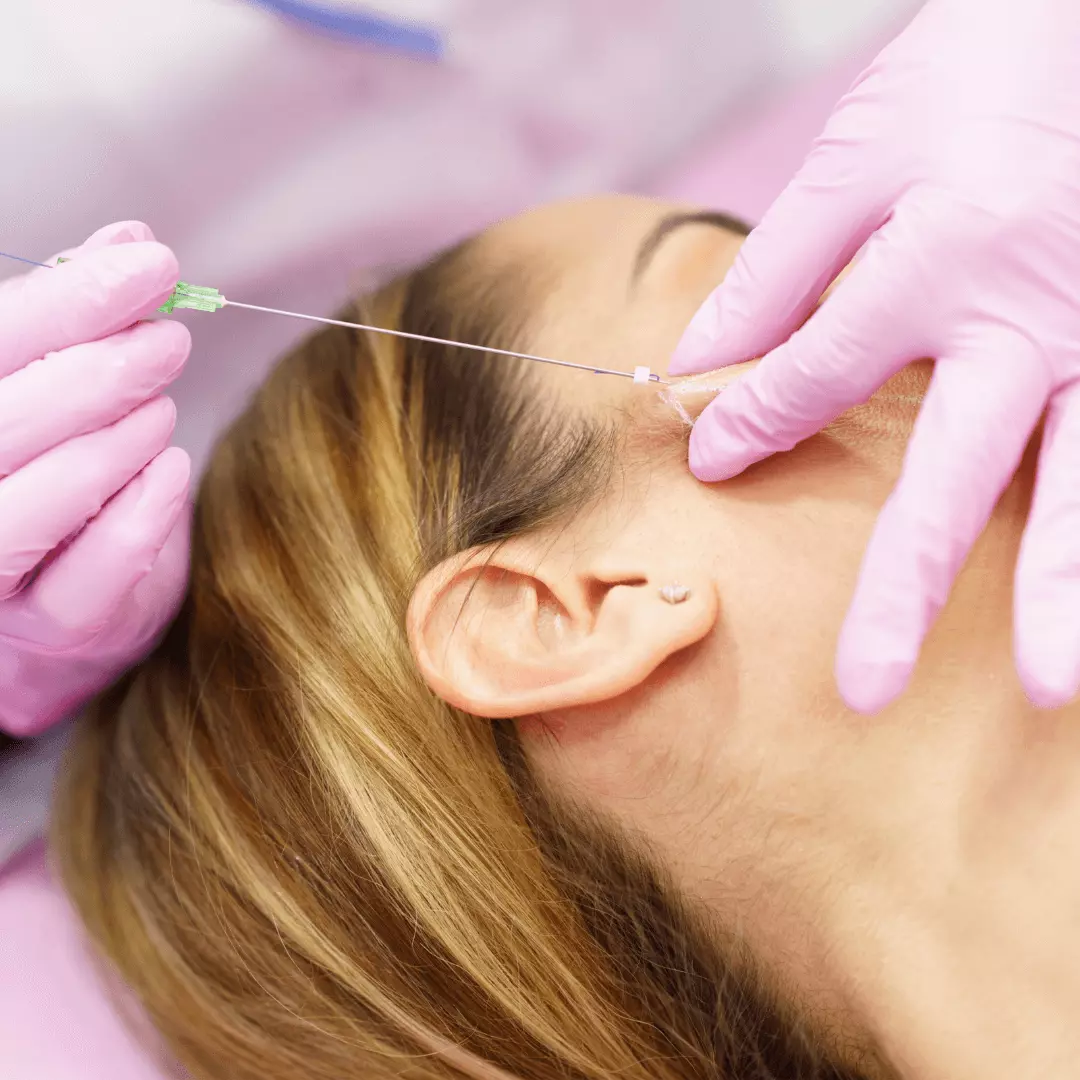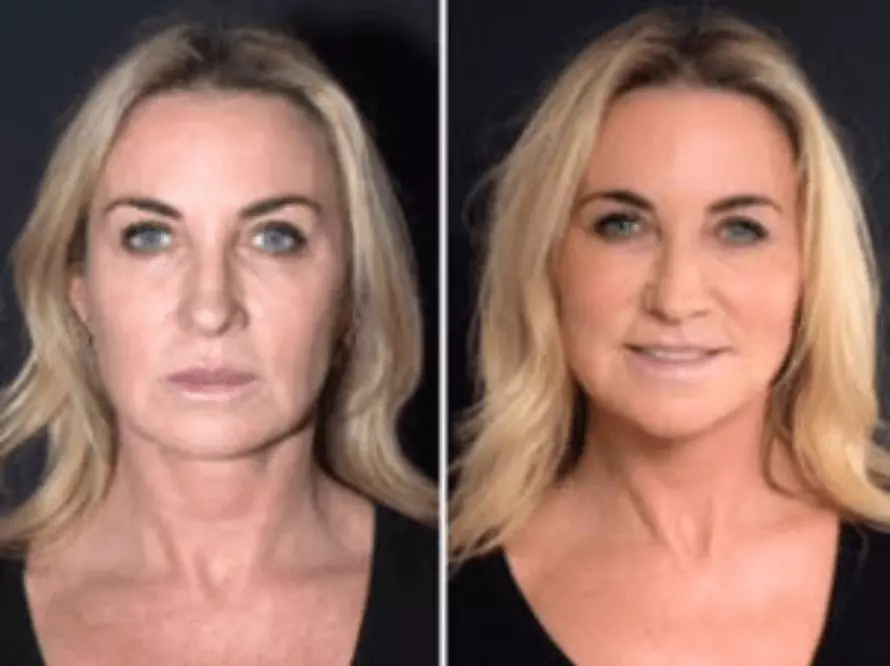In this blog Save Face Accredited practitioner, Yuliya Culley shares her top tips about what to do if you are considering a thread lift procedure. Yuliya is the Director of Novello Skin Clinic and has been accredited since 2017.
Recently, after spending three full days at AMWC 2024 in Monaco, learning about medical aesthetic trends, the news is that the thread lift is here to stay. There has been a lot of negative press around the thread lift with side effects such as infection, thread protrusion, discomfort, hematomas, and concerns raised around it by the public. Nonetheless, many patients consider it as an option for a more lifted and fresh appearance with the idea of settled changes without surgery, yet as something to improve self-esteem and confidence. Many medical practitioners have made efforts to ensure that thread lift procedures provided in their clinics meet local and national regulatory standards.
To help the public in search of a safe, trusted provider, here is a mini-guide with questions you should research and ask the practitioner of your choice.
Suitability
The correct patient selection is key with conducting an initial consultation and equipping patients with 360-degree information about benefits, risks, and aftercare to give informed consent and have a cooling-off period. This is not a treatment option for everyone: the thread lift would not be suitable for extensive skin sagging or patients with significant facial volume loss. In this case, a combination of non-surgical treatments or potentially surgical options would be considered. Importantly, some medical conditions such as bleeding disorders, inflammatory conditions of the areas of concern, acute illnesses, and autoimmune conditions would be contraindications for a thread lift. If patients undergo dental treatments or are preparing for elective surgeries, they should be conducted first because of the risk of infection and difficulty opening the mouth post-thread lift procedure.
Training
The level of training can vary when it comes to the thread lift; therefore, it is important to make sure training providers offer quality training with quality learning materials, practical and continuing support of medical professionals. It is a legal requirement to have liability insurance. In England, the Care Quality Commission regulates the thread lift procedure performed by registered medical professionals and demands that they meet training, insurance, a safe environment, and aftercare standards.
A safe environment
Importantly, there are many clinics that follow excellent care quality standards with patients' care as paramount and core of their practice. They should stand as a port of clinical excellence and care. The thread lift is a regulated procedure by CQC in England with a requirement for medical assessment for the treatment, established clinical protocols in place including infection control, thread lift clinical protocol, minor surgery protocol, management of deteriorating patients in case of complications such as syncope or infection. Importantly, aftercare instructions, recovery topical products, follow-up appointments with evaluation of results, potential side effects, patients' satisfaction are important aspects of post-thread lift aftercare.
The thread lift materials vary based on sizes, structure, and materials. Currently, polydioxanone (PDO) smooth, spring, cogs-shaped, and poli-L-lactic acid (PLLA) cone-based sutures such as Silhouette Soft are the most frequently used threads in the UK with some polycaprolactone (PCL) thread being utilized. PDO threads have been FDA approved as a class II medical device. The regulated clinics make sure they follow these steps with relevant clinical policies in place.
Registration with regulatory bodies
While many established medical aesthetic practitioners make every effort to meet standards, the regulatory system is not without pitfalls. For example, the CQC would not regulate non-medical establishments if the thread lift is not performed by a registered medical practitioner. Hence, this is where educating the public is important as patients need to do their research and ask questions for their safety. Hopefully, a planned licensing scheme of non-surgical procedures would improve the overall picture. Remember, if you are rushed into having treatment such as a thread lift, does it make it safe? Ask clinics for their credentials and how they make sure you are safe. It is a topical discussion about raising public awareness about good practice with the help of regulators such as Save Face.
Cooling-off period
A cooling-off period is vital if you consider a thread lift. There is a recovery time involved with swelling of treated areas, discomfort, difficulty opening the mouth widely for the first couple of weeks after treatments, as well as potential temporary asymmetry, bruising, protrusion of threads, and dimpling. Do not rash in having procedure without considering recovery, side effects and aftercare.
Is it worth having a thread lift?
With sufficient preparation, procedure protocol, and aftercare, a thread lift is a powerful tool, which is more beneficial for patients with mild-to-moderate skin laxity. There are different techniques utilised to enable medical professionals to achieve desired results for their patients. However, results can vary due to personal anatomy variations, age, lifestyle, compliance in following aftercare instructions. In many cases, a combined treatment approach with utilising a thread lift, dermal fillers, energy-based devices, skin booster, or polynucleotides are more effective than standalone treatment. Therefore, it is important to address patients' expectations as a thread lift alone would not address issues such as severe skin laxity, volume loss, and skin changes due to photo-aging. It has application and can achieve positive results in certain patients' group in the right hands.
